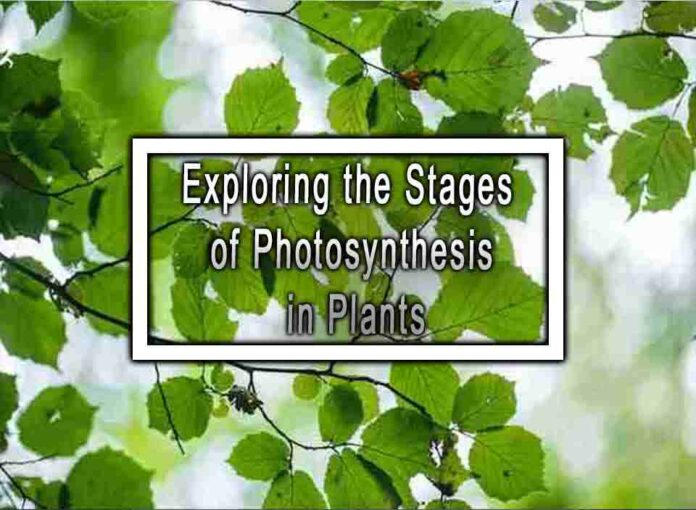Photosynthesis is the process by which plants, algae, and some bacteria convert light energy into chemical energy in the form of glucose and other organic compounds. It plays a crucial role in providing energy and sustenance for the organisms involved and is also responsible for oxygen production. Photosynthesis occurs in two main stages: the light-dependent reactions and the light-independent reactions (also known as the Calvin cycle).
1. Light-Dependent Reactions:
These reactions occur in the thylakoid membranes of the chloroplasts and require light to take place. The main components and steps of the light-dependent reactions are as follows:

a. Photosystem II (PSII): Light energy is absorbed by pigments, particularly chlorophyll, in the thylakoid membrane. This energy excites electrons in the chlorophyll molecules, which are then passed down an electron transport chain (ETC) within the thylakoid membrane.
b. Electron Transport Chain (ETC): As the excited electrons move along the ETC, they release energy that is used to pump protons (H+ ions) across the thylakoid membrane, creating a proton gradient. This gradient stores potential energy.
c. Photosystem I (PSI): The electrons that have lost energy in PSII are replenished by the electrons from the ETC. Light energy is again absorbed, exciting these electrons. These high-energy electrons are eventually used to reduce NADP+ to NADPH, a molecule that carries high-energy electrons for later use in the Calvin cycle.
d. ATP Production:The proton gradient created during the movement of electrons through the ETC drives the synthesis of ATP through a process called chemiosmosis. ATP synthase enzyme allows protons to flow back into the stroma, and the energy generated is used to synthesize ATP.
2. Light-Independent Reactions (Calvin Cycle):
The Calvin cycle takes place in the stroma of the chloroplasts and does not directly require light. It uses the ATP and NADPH produced during the light-dependent reactions to convert carbon dioxide into glucose. The main steps of the Calvin cycle are as follows:
a. Carbon Fixation: Carbon dioxide is captured by the enzyme ribulose-1,5-bisphosphate carboxylase/oxygenase (RuBisCO) and combined with a five-carbon compound, ribulose-1,5-bisphosphate (RuBP), to form a six-carbon compound that immediately splits into two three-carbon molecules called 3-phosphoglycerate (3-PGA).
b. Reduction: ATP and NADPH produced in the light-dependent reactions are used to convert 3-PGA into a higher-energy molecule, glyceraldehyde-3-phosphate (G3P). Some of the G3P molecules are used to regenerate RuBP, while others proceed to the next step.
c. Regeneration of RuBP:The remaining G3P molecules are used to regenerate RuBP using ATP from the light-dependent reactions.
d. Glucose Formation: Some of the G3P molecules are eventually converted into glucose and other carbohydrates that the plant can use for energy storage and growth.
In summary, photosynthesis is a complex process that involves both light-dependent and light-independent reactions. The light-dependent reactions capture light energy and convert it into chemical energy (ATP and NADPH), while the light-independent reactions (Calvin cycle) use this energy, along with carbon dioxide, to produce glucose and other organic compounds essential for the plant’s growth and survival.









